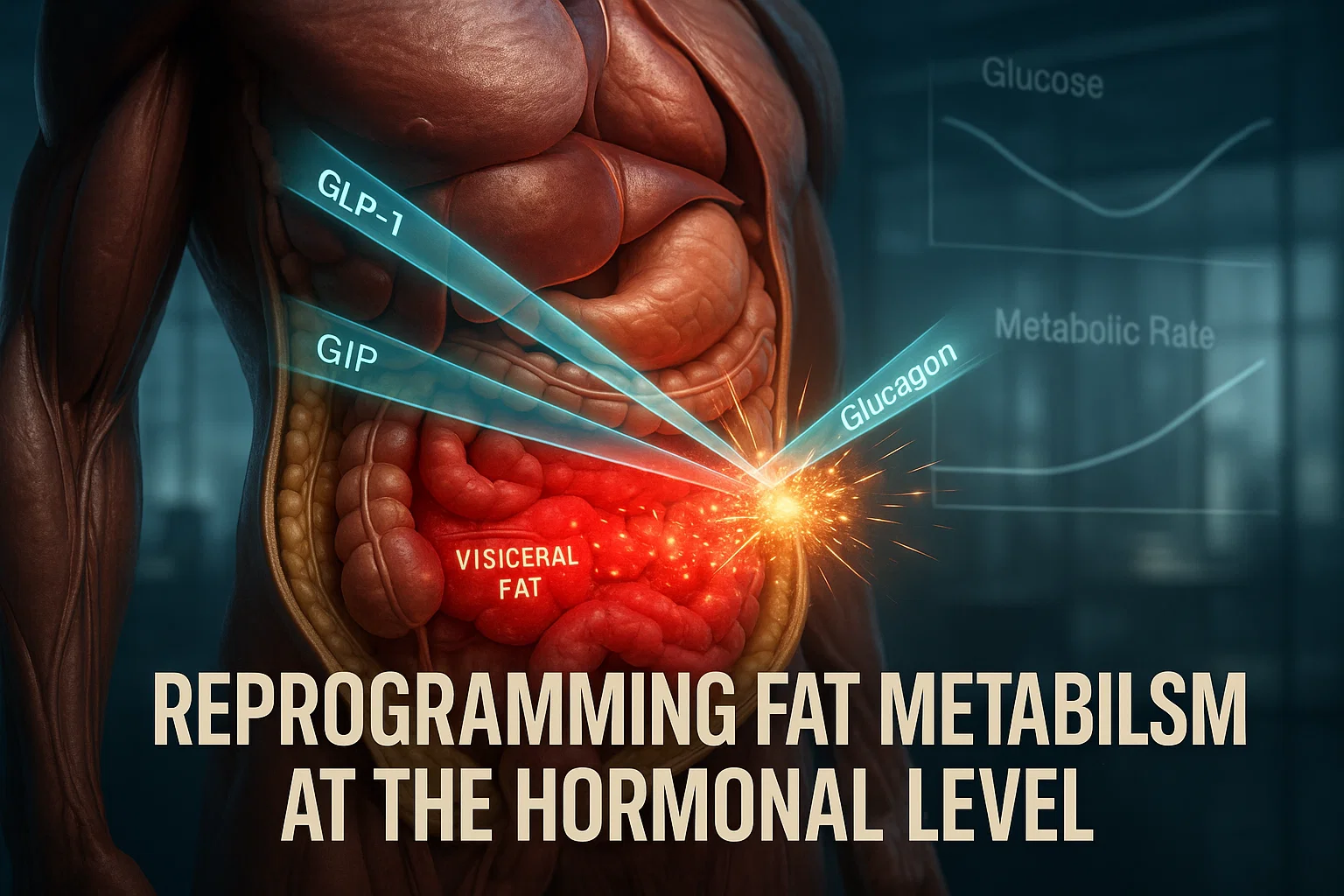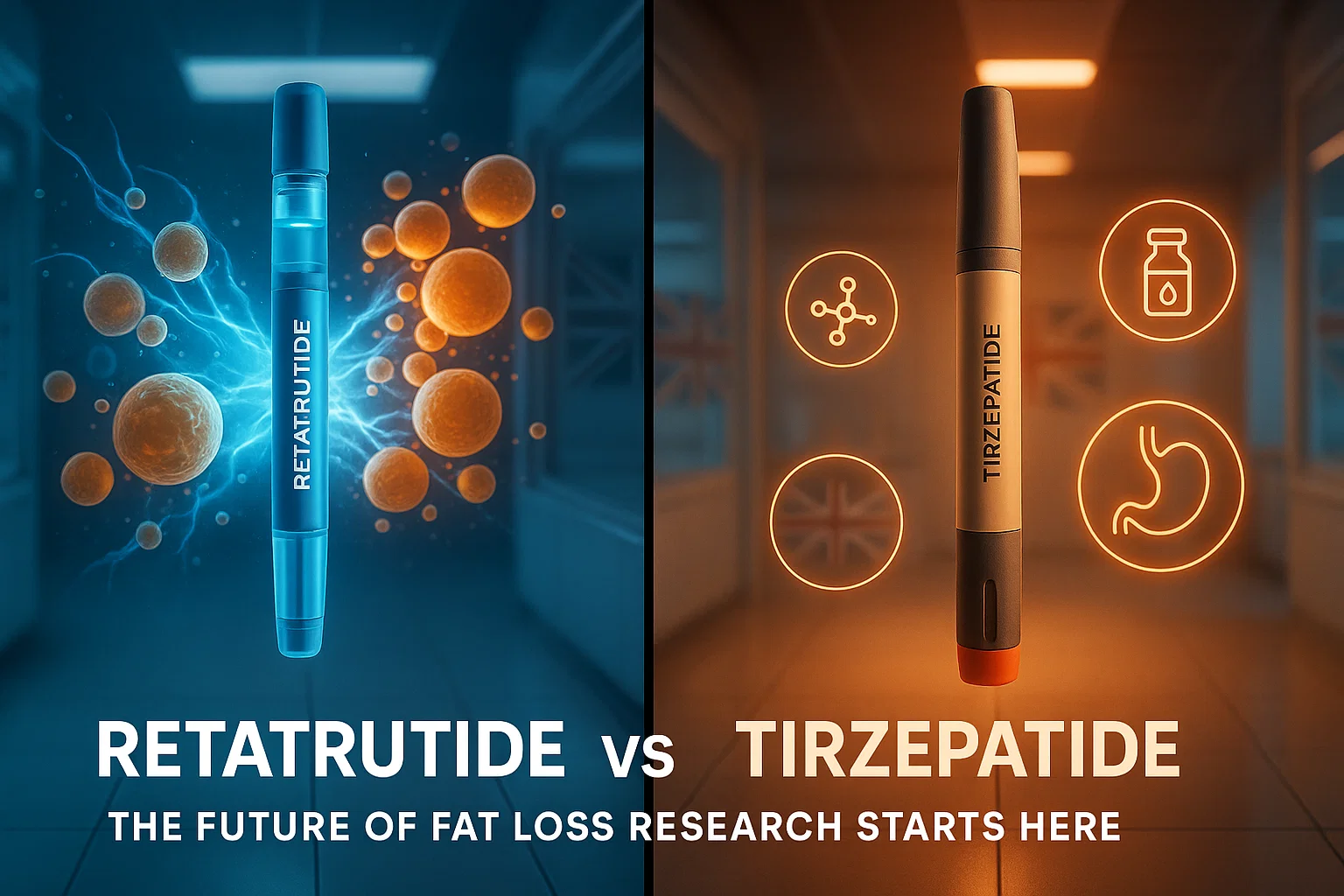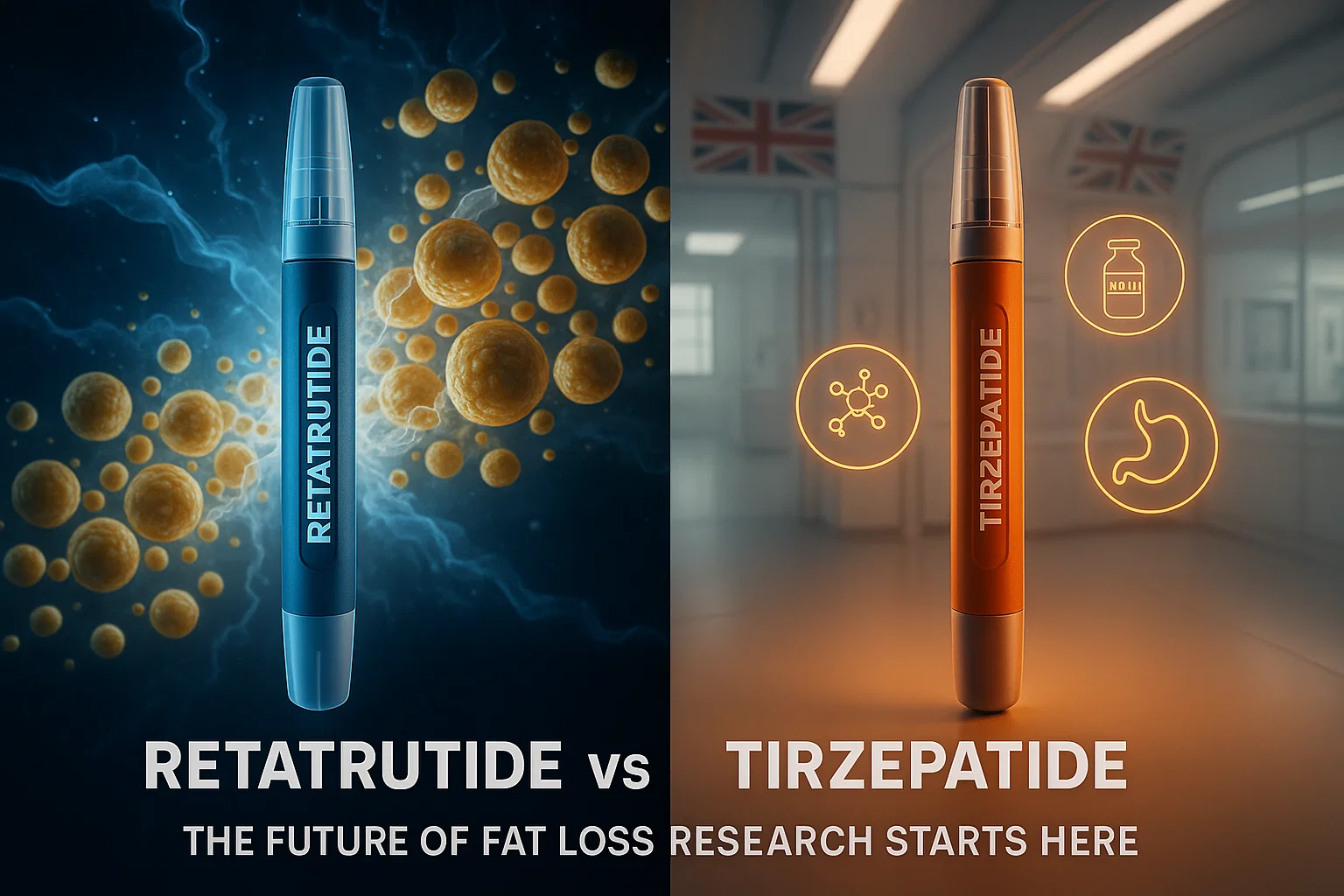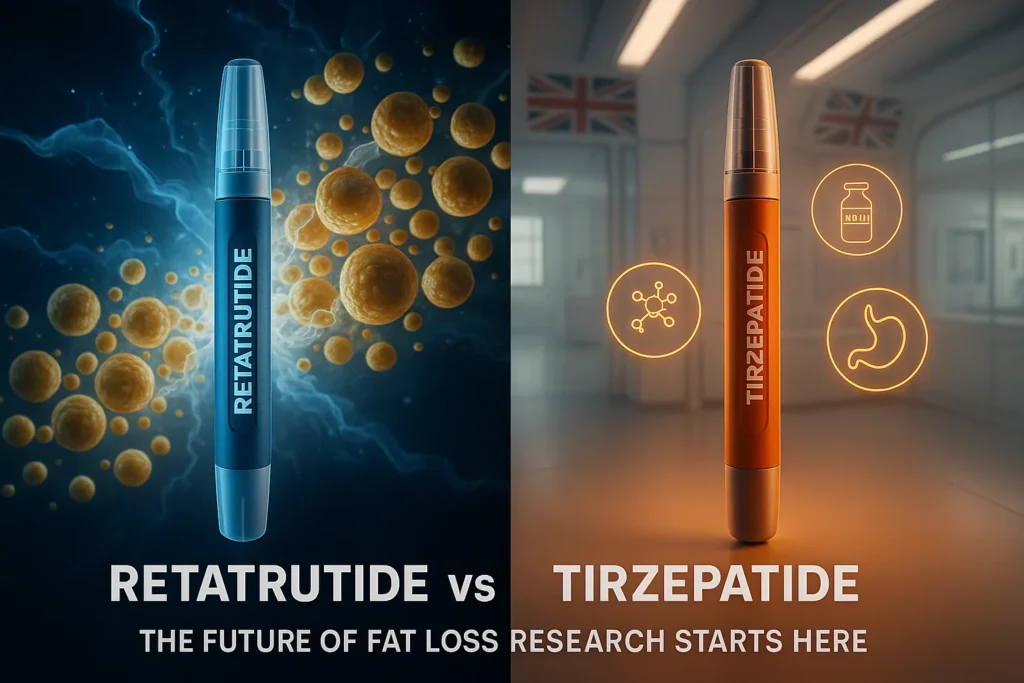
Retatrutide vs Tirzepatide: Key Differences for Research Use
In the world of metabolic research, few compounds have generated as much excitement as Retatrutide vs Tirzepatide. Both peptides are leading the charge in the fight against obesity and type 2 diabetes, offering revolutionary benefits through their unique receptor pathways. Researchers across the UK and beyond are exploring their capabilities to transform the future of fat loss and appetite regulation. But what exactly sets them apart?
This detailed comparison guide dives into Retatrutide vs Tirzepatide to highlight their mechanisms, study outcomes, and practical applications in laboratory environments.
Understanding the Receptor Pathways
The primary difference in Retatrutide vs Tirzepatide lies in receptor targeting:
- Tirzepatide is a dual agonist. It activates both the GLP-1 (glucagon-like peptide-1) and GIP (gastric inhibitory polypeptide) receptors. These work together to enhance insulin secretion, suppress appetite, and slow gastric emptying.
- Retatrutide, on the other hand, is a triple agonist. It stimulates GLP-1, GIP, and glucagon receptors. This third receptor significantly boosts fat metabolism, making it especially attractive for researchers focused on aggressive fat reduction and metabolic activation.
Understanding these mechanisms is crucial when evaluating Retatrutide vs Tirzepatide for research protocols.
Weight Loss Outcomes in Research
When comparing Retatrutide vs Tirzepatide, the most commonly studied metric is weight reduction:
- Studies show Tirzepatide achieves up to 22.5% total body weight loss in longer trials.
- Retatrutide, due to its glucagon activity, has shown up to 24.2% or more, depending on dose and frequency, within shorter durations.
This difference in weight loss performance is one of the most debated elements in the Retatrutide vs Tirzepatide discussion.
Moreover, Retatrutide’s glucagon pathway may enhance energy expenditure, making it ideal for obesity studies with a metabolic resistance angle.
Appetite and Energy Balance Effects
In head-to-head comparisons of Retatrutide vs Tirzepatide, appetite regulation differs:
- Tirzepatide focuses on delaying gastric emptying and increasing satiety. It slows digestion, which reduces calorie intake.
- Retatrutide, while also affecting satiety, influences basal metabolic rate and fat oxidation, creating a dual action: suppressing hunger and enhancing energy use.
This makes Retatrutide vs Tirzepatide an important comparison for researchers looking into appetite suppression versus direct energy expenditure.

Dosing Differences and Research Protocols
Another key component in the Retatrutide vs Tirzepatide evaluation is dosing:
- Tirzepatide doses typically range between 2.5mg to 15mg weekly in research.
- Retatrutide dosing begins lower but can escalate rapidly. Pens from SlimPens.co.uk come in 10mg, 20mg, 30mg and even 50mg kits, offering scalable research options.
Retatrutide vs Tirzepatide protocols require different escalation timelines. Tirzepatide benefits from slower increases to avoid nausea, while Retatrutide has demonstrated faster adaptation.
Fat Distribution and Visceral Fat Reduction
Research into Retatrutide vs Tirzepatide suggests both impact body composition, but in slightly different ways:
- Tirzepatide often leads to overall fat reduction, including subcutaneous fat.
- Retatrutide has a stronger effect on visceral fat, the dangerous fat around organs, due to its glucagon receptor activation.
This makes Retatrutide vs Tirzepatide an especially relevant study for researchers focused on cardiovascular risk and liver fat.
Side Effects and Tolerability
Any peptide research must consider adverse effects:
- Tirzepatide is associated with nausea, diarrhoea, and constipation in some participants.
- Retatrutide shows fewer GI issues in many studies, potentially due to better formulation and receptor balance.
While both are well-tolerated in controlled settings, the Retatrutide vs Tirzepatide comparison favours Retatrutide for rapid escalation and reduced side effects in some models.
Storage and Stability
When purchasing from SlimPens.co.uk, both peptides are shipped in cold-chain packaging. However, storage still plays a role in long-term usability.
- Store both at 2–8°C.
- Avoid freezing either compound.
- Retatrutide vs Tirzepatide stability is similar, but Retatrutide has a longer reported shelf-life in pre-filled pen format.
Researchers must note these details for consistent, accurate dosing.
Cost Efficiency for Research Labs
When budgeting for studies, cost-per-mg matters. Retatrutide vs Tirzepatide pricing differs across suppliers, but SlimPens offers competitive rates with UK stock:
- 10mg Retatrutide Pens now available from £150 (was £200)
- Tirzepatide pens remain stable at current market rates
Retatrutide becomes more cost-effective as dosage scales.
Which Should You Choose?
The final choice between Retatrutide vs Tirzepatide depends on your research focus:
- Choose Tirzepatide for appetite suppression, early-stage obesity models, and longer trials.
- Choose Retatrutide for aggressive fat loss studies, metabolic dysfunction models, and rapid adaptation testing.
Both have value—but understanding the full landscape of Retatrutide vs Tirzepatide enables smarter study design.
The discussion around Retatrutide vs Tirzepatide continues to evolve as more data emerges. Each compound offers unique advantages, and your choice should align with your study goals and protocol design.
SlimPens.co.uk offers lab-tested, ready-to-use pens, UK next-day delivery, and dedicated researcher support. Whether you’re starting a new GLP-1 project or refining an existing one, we’re here to support your success.
Explore our latest range of Retatrutide vs Tirzepatide research pens today at SlimPens.co.uk.
Related Articles


Safe Dosing Protocols for Research Peptides: A Guide for GLP-1 Studies



